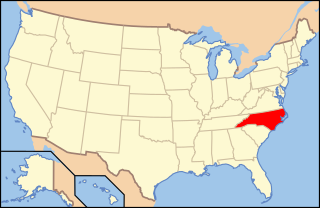The Loramycetaceae are a family of fungi in the Ascomycota, class Leotiomycetes. This is a monotypic taxon, containing the single genus Loramyces; the genus contains two aquatic species, L. juncicola, named by American mycologist William H. Weston in 1929, and L. macrosporus, first described by C.T. Ingold and B. Chapman in 1952.
Keissleriella rara is a rare species of fungus in the family Lophiostomataceae. The species fruits exclusively on dead or dying standing culms of the saltmarsh plant Juncus roemerianus. It is known only from the Atlantic Coast of North Carolina.
Massarina carolinensis is a species of fungus in the Lophiostomataceae family. The species is found exclusively on the lower parts of the culms of the saltmarsh Juncus roemerianus on the Atlantic Coast of North Carolina.

Paraphaeosphaeria pilleata is a species of fungus in the Lophiostomataceae family. The species fruits exclusively in the lower parts of the culms of the black needlerush. It is found on the Atlantic Coast of North Carolina.
Botryotrichum piluliferum is a fungal species first identified in 1885 by Saccardo and Marchal. It was discovered to be the asexual state of a member of the ascomycete genus, Chaetomium. The name B. piluliferum now applies to the fungus in all its states. B. piluliferum has been found worldwide in a wide range of habitats such as animal dung and vegetation. The colonies of this fungus start off white and grow rapidly to a brown colour. The conidia are smooth and white. B. piluliferum grows optimally at a temperature of 25-30 °C and a pH of 5.5.
Capronia mansonii is a mesophilic black yeast that is a part of the Herpotrichiellaceae. The species is uncommon in nature but is saprotrophic in nature and been discovered on decaying plant matter, particularly wood. This fungus is naturally found in the Netherlands and has successfully been cultured in lab. It is a teleomorph of the ascomycota division and possesses brown spores.

Hydropunctaria is a genus of saxicolous (rock-dwelling), crustose lichens in the family Verrucariaceae. The genus includes both aquatic and amphibious species, with members that colonise either marine or freshwater habitats. The type species, Hydropunctaria maura, was formerly classified in the large genus Verrucaria. It is a widely distributed species common to littoral zones. Including the type species, five Hydropunctaria lichens are considered marine species: H. adriatica, H. amphibia, H. aractina, H. orae, and H. oceanica.
Atrophysma is a fungal genus in the family Pannariaceae. It contains the single species Atrophysma cyanomelanos, a crustose lichen found only in Alaska.

Rhizocarpales are an order of lichen-forming fungi in the subclass Lecanoromycetidae of the class Lecanoromycetes. It has two families, Rhizocarpaceae and Sporastatiaceae, which contain mostly crustose lichens.
Opegrapha vulpina is a species of lichenicolous (lichen-eating) fungus in the family Opegraphaceae. It is found in the Czech Republic, Dobruja, Romania, and the Italian Apennine Mountains. It grows parasitically on two species of saxicolous (rock-dwelling), crustose lichens.
Zwackhiomyces polischukii is a species of lichenicolous (lichen-eating) fungus in the family Xanthopyreniaceae. It occurs in Ukraine, where it parasitises the crustose lichens Bacidia fraxinea and B. rubella.
Clypeococcum bisporum is a species of lichenicolous (lichen-eating) fungus in the family Polycoccaceae. It is found in the Russian Far East, in Mongolia, and from northwest Alaska, where it grows parasitically on lichens from the genera Cetraria and Flavocetraria.
Endococcus hafellneri is a species of lichenicolous (lichen-eating) fungus in the family Verrucariaceae. It is found in North Asia and the Russian Far East, Estonia, and Japan, where it grows on the lobes of the lichens Flavocetraria cucullata and Cetraria islandica.
Opegrapha verseghyklarae is a little-known species of lichenicolous (lichen-eating) fungus in the family Teloschistaceae. It is found in the Russian Far East, where it grows on the thalli and apothecia of the crustose lichen Ochrolechia pallescens.
Astrothelium stromatofluorescens is a species of corticolous (bark-dwelling) lichen in the family Trypetheliaceae. It is only known to occur in a few locations in Brazil and Bolivia.
Halospora is a genus of lichenicolous (lichen-dwelling) fungi in the family Verrucariaceae. Species in the genus parasitise calcicolous crustose lichens, i.e., those that prefer lime-rich substrates.
Carbonea austroshetlandica is a species of lichenicolous fungus belonging to the family Lecanoraceae. It was discovered in the South Shetland Islands where it grows on Carbonea assentiens but has since been reported from King George Island where it uses Rhizocarpon geographicum as a host.
Capronia harrisiana is a lichenicolous fungus on the tripartite foliose lichen Crocodia aurata. Although the host species is widespread in many areas of the world, no species of Capronia has previously been reported from Crocodia aurata, and Capronia harrisiana appears to be endemic to the southern Appalachian Mountains in southeastern North America. The new species is characterized by 50–120 µm wide ascomata, 40–95 µm long setae, (1–)3-septate, pale brown, 11.9–15.7 × 4.4–5.8 µm ascospores, and an I+ red hymenium.
Leptogium compactum is a species of corticolous (bark-dwelling), foliose lichen in the family Collemataceae. Found in northwestern North America, it was formally described as a new species in 2016 by Daphne Stone, Frances Anderson, and James Hinds. It is distinguished from related Leptogium species by the tightly packed hyphae in the medulla; this characteristic internal anatomy is alluded to in the species epithet compactum.
Ostropomyces is a genus of fungi in the family Stictidaceae. It has two species, both of which are found in tropical forests in northern Thailand, where they grow as saprotrophs on bark.


